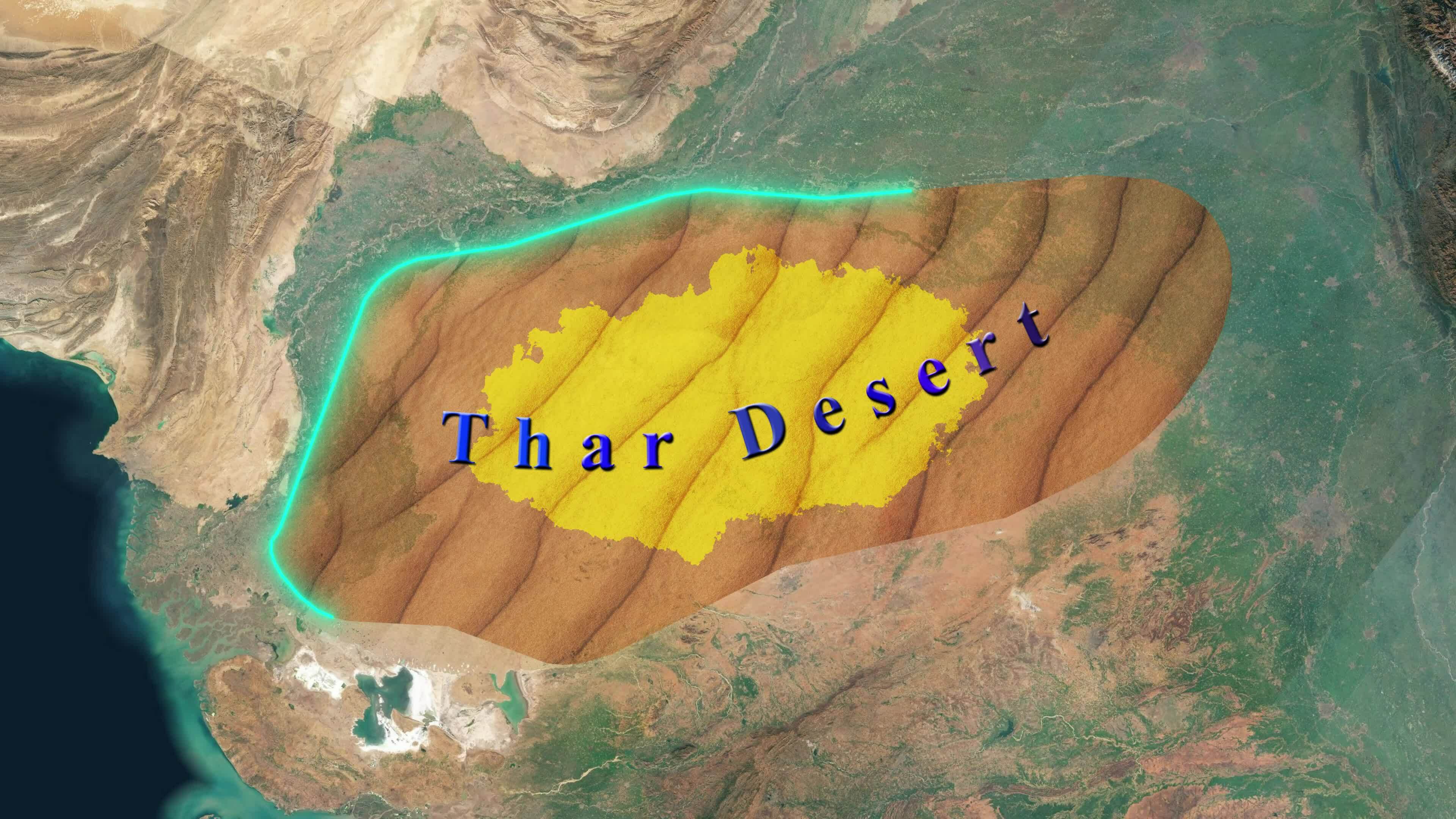Pakistan is home to a diverse range of landscapes, including mountains, rivers, plains, and deserts. Among these, the Thar Desert stands out as the largest desert in Pakistan. Also known as the Great Indian Desert, it extends into India and covers a significant portion of southeastern Pakistan, particularly in Sindh province.
The Thar Desert is a vast arid region that spans across Sindh province in Pakistan and Rajasthan in India. It is known for its sand dunes, extreme temperatures, and unique ecosystem. The desert plays a crucial role in shaping the culture and economy of the region. The desert's inhabitants have adapted their lifestyle to survive in this harsh environment, relying on traditional methods of water conservation and sustainable agriculture.

1. Geography and Location
The Thar Desert covers approximately 200,000 square kilometers, making it the 17th largest desert in the world. In Pakistan, it primarily lies in Sindh and southeastern Punjab. The desert is bordered by the Indus River to the west, the Aravalli Range to the east, the Rann of Kutch to the south, and the Punjab Plains to the north.
The landscape consists of shifting sand dunes, small oases, salt flats, and seasonal rivers like the Luni River and Ghaggar-Hakra River. The desert's topography constantly changes due to strong winds, creating an ever-evolving terrain.
2. Climate and Weather Patterns
The Thar Desert experiences an arid climate, characterized by extreme temperatures. Summers can reach up to 50°C (122°F), while winters drop to 0°C (32°F). The region receives low annual rainfall, ranging between 100-500 mm, mostly during the monsoon season. The high evaporation rates contribute to severe water scarcity. Due to the low humidity levels, temperature fluctuations between day and night can be significant, making survival conditions even more challenging.
Winds play a crucial role in shaping the desert’s environment. Dust storms, locally known as “Andhis”, are common during the summer months, reducing visibility and affecting daily life.
3. Flora and Fauna
Despite harsh conditions, the Thar Desert supports unique biodiversity. The common flora includes Prosopis Cineraria (Khejri Tree), Acacia (Babool), Cactus species, and scattered grasslands that provide grazing for animals. Many plants have evolved specialized mechanisms such as deep roots and water-storing tissues to survive long dry spells.
The desert is home to wildlife such as Chinkara (Indian Gazelle), Desert Fox, Great Indian Bustard, Blackbuck, and Monitor Lizard. These species have adapted to the extreme conditions of the desert. Some animals, such as the spiny-tailed lizard, survive by burrowing underground to escape the harsh temperatures. Birds such as vultures, eagles, and sandgrouse are also commonly found in the region.
4. Cultural and Economic Significance
The Thar Desert is not just a barren land; it is home to vibrant cultures and economic activities. The people of Thar have a deep connection with their traditions, which are reflected in their festivals, music, and crafts.
Cultural Aspects
-
Influences from Sindhi and Rajasthani traditions, including folk music and dance
-
The Thari language, spoken by local communities
-
Camel festivals celebrated in various regions
-
Traditional mud houses adapted to desert life
-
Colorful attire, with women wearing bright, embroidered dresses and men donning turban
-
Folk tales and poetry, which narrate stories of survival and bravery
Economic Contributions
-
Livestock farming with camels, sheep, and goats, providing meat, milk, and wool
-
Mining of gypsum, limestone, and coal, contributing to local industries
-
Handicrafts such as embroidery, pottery, and textiles, which attract buyers worldwide
-
Renewable energy projects involving solar and wind power, helping to mitigate electricity shortages
-
Tourism, with visitors attracted to the desert’s unique landscape, cultural heritage, and wildlife reserves

5. Challenges and Conservation Efforts
Despite its beauty, the Thar Desert faces several environmental and socio-economic challenges.
Major Challenges
Desertification due to deforestation, overgrazing, and climate change
-
Water scarcity, as the desert relies on underground aquifers and limited rainfall
-
Loss of biodiversity, with many species facing habitat destruction and poaching
-
Extreme weather conditions, making agriculture and daily life difficult for locals
-
Lack of infrastructure, limiting access to healthcare, education, and economic opportunities
Conservation Measures
Efforts are being made to combat desertification and conserve wildlife. Initiatives include afforestation programs, wildlife protection projects, rainwater harvesting, and the promotion of sustainable development through eco-tourism and renewable energy.
Government policies and NGOs are working together to introduce water conservation techniques such as building small dams, rainwater collection systems, and underground water storage facilities. Moreover, local communities are being educated on sustainable farming practices that prevent soil degradation.





.gif)














Sign in
to continue to ilmkidunya.com